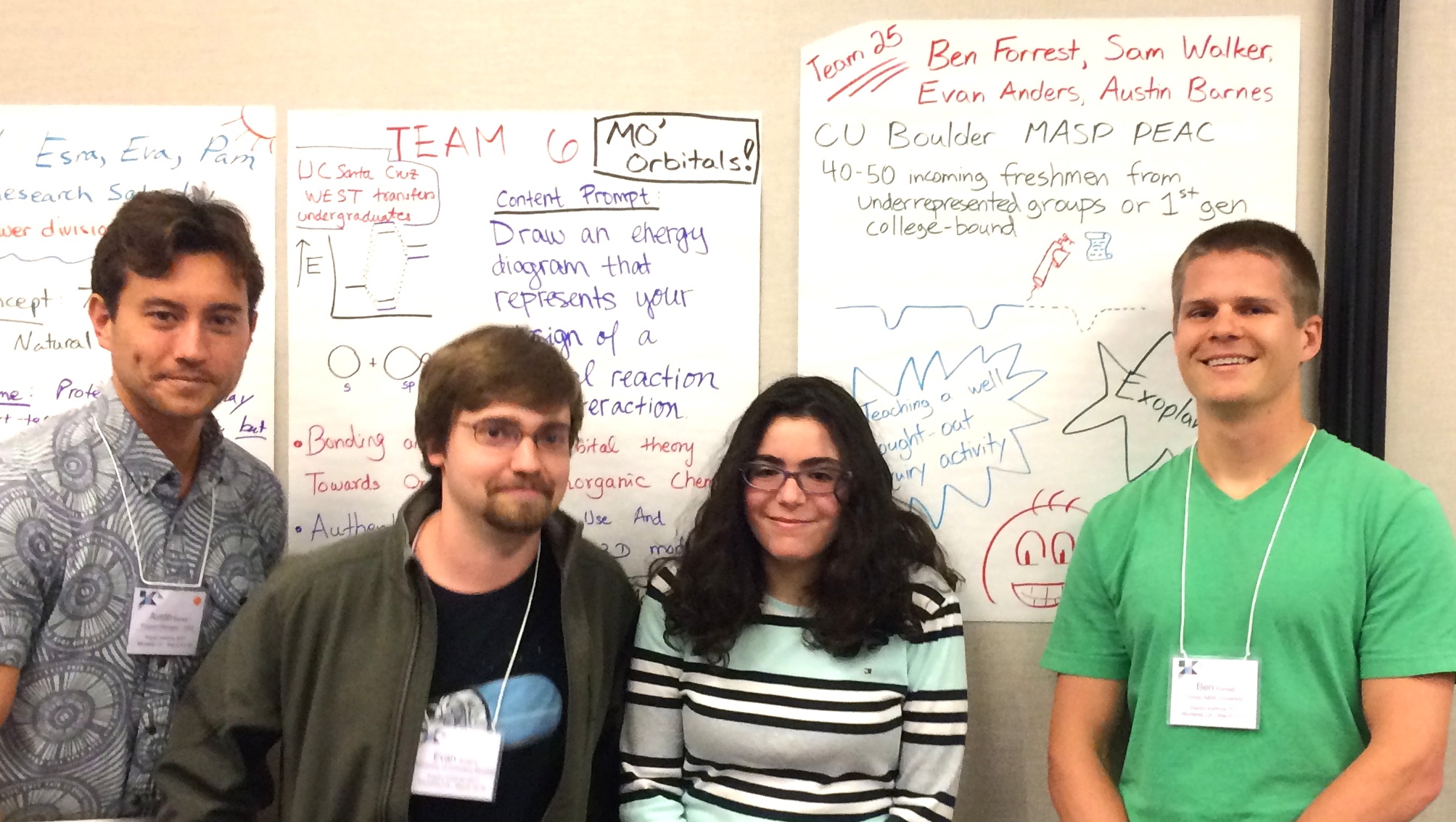MASP PEAC: this team of scientist/engineer educators designed and taught an inquiry lab activity through ISEE’s Professional Development Program

Venue: MAST PEAC at CU Boulder
Team members:
Austin Barnes (Design Team Lead): Program Manager, ISEE, UC Santa Cruz
Ben Forrest: Graduate Student, Physics & Astronomy, Texas A&M University
Evan Anders: Graduate Student, Astrophysical & Planetary Sciences, University of Colorado Boulder
Samantha Walker: Graduate Student, Astrophysical & Planetary Sciences (APS), University of Colorado Boulder
Audience: 42 1-2 year undergraduates
Activity Name: Planet Hunting at CU Boulder MASP PEAC
Learning Goals Summary (author Austin Barnes):
Our content learning outcome was that our learners used the concepts of how to derive orbital period and relative size of a transiting exoplanet using a lightcurve to propose a follow-up observation to confirm the existence of the exoplanet. In particular, learners were pushed toward content understanding of the three following dimensions:
-How to determine the number of exoplanets
-How to determine the orbital period of an exoplanet
-How to determine the relative size of the exoplanet to the star
An aspect of design that worked well towards this content was starting with a simple example during the introductory activity and then throwing them into the deep end with multiple light curves to investigate. This got them to see the extrapolation to the number of exoplanets and orbital periods of those planets by seeing a simple example first. It by no means was easy and still required a great deal of facilitation, but made the investigations less intimidating.
To improve our activity, I would either modify the rubric to scratch the 3rd dimension (relative size of the exoplanet to the star) or facilitate toward this goal much earlier. It would have required more heavy-handed facilitation towards dimensions 1 and 2 because learners struggled with these mightily, but then we would have brought in the thinking tool (orrery) sooner to get them thinking about relative size.
Funding for this team provided by: NSF AST #81201
